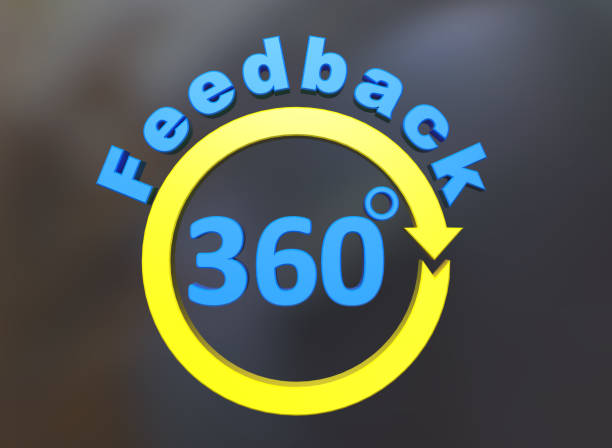Understanding 360 Feedback Assessment

The 360 feedback assessment, often referred to as multi-rater feedback, isn’t a new kid on the block. Its foundations can be traced back several decades, where companies aimed to get a well-rounded view of employee performance.
Evolution and Origin of 360 Assessments
The 1980s witnessed the inception of 360 assessments, albeit not as refined as they are today. Initially, these assessments targeted top-level executives, serving as a magnifying glass on their leadership skills. Today, all levels of employees depend on it as a necessary tool.
Fundamental Concepts behind 360 Feedback
Think of the 360 feedback assessment as a mirror. Instead of a singular perspective, you receive feedback from multiple angles – peers, managers, subordinates, and even clients. This collective input provides a holistic image, allowing for genuine introspection and growth.
Benefits of the 360 Feedback Assessment
When employed strategically, 360 feedback can become an organization’s superpower. Not convinced? Let’s unpack its advantages.
Enhancing Employee Development
There’s nothing like genuine feedback to propel one’s career trajectory. The diverse perspectives obtained through a 360 feedback mechanism ensure that an employee’s strengths and areas of improvement aren’t overlooked.
Facilitating Clear Communication
Miscommunication can be the iceberg to a company’s Titanic. With regular feedback, employees can fine-tune their communication style, ensuring that messages are not just sent but also understood.
Identifying Training and Skill Gaps
Nothing you can’t see can be fixed. Regular assessments bring forth skills that need polishing, paving the way for relevant training sessions.
Implementing a 360 Feedback Assessment
Knowing the importance of 360 feedback is one thing. Implementing it effectively is another ball game.
Steps to Introduce a 360 Feedback System
1. Define the objective: Why are you implementing this? What do you hope to achieve?
2. Choose your raters wisely. Diversity in feedback is key.
3. Design questions that elicit actionable feedback.
4. Establish a culture where feedback is welcomed, not dreaded.
5. Review, act, and iterate.
Best Practices in Gathering Feedback
Collecting feedback isn’t a task; it’s an art. Ensure anonymity, frame questions constructively, and create an atmosphere of trust where employees feel safe sharing.
Choosing the Right Tools for the Assessment
While pen and paper might seem archaic, sometimes they’re just what’s needed. However, numerous digital platforms can streamline the process, ensure anonymity, and make feedback interpretation a breeze.
Challenges in 360 Feedback Assessment
Like any tool, the 360 feedback system isn’t devoid of challenges.
Addressing Bias and Subjectivity
Human nature makes us susceptible to biases. Whether it’s the halo effect or a personal grudge, feedback can sometimes be tinted. Training sessions and awareness can help mitigate this.
Managing Overwhelming Feedback
Too many cooks can spoil the broth. Similarly, too much feedback can be daunting. It’s crucial to discern what’s constructive and what’s just noise.
Navigating Cultural and Organizational Differences
In global companies, cultural nuances can influence feedback. Understanding these differences and adapting the assessment accordingly is pivotal.
Interpreting Results of 360 Feedback
Feedback without actionable insights is a job half done.
Analyzing Feedback Trends
Spotting patterns in feedback can shed light on systemic issues or highlight collective strengths. Dive deep and connect the dots.
Actions to Take Post-Assessment
Every piece of feedback should translate into action, whether it’s a pat on the back or a training session.
Ensuring Constructive Feedback
Feedback should empower, not dishearten. Framing it constructively is the key.
360 Feedback Assessment
Here’s a deep dive into what makes this tool so potent.
In-depth Dive into the Assessment Process
A successful 360 feedback process is cyclic – collect, act, and revisit. With every cycle, improvements should be evident, showcasing the tool’s efficacy.
Real-world Examples and Scenarios
From tech giants like Google to startups, many have harnessed the power of 360 feedback to mold leaders and build cohesive teams.

FAQs
- How often should 360 feedback assessments be conducted?
Annually or bi-annually is standard, but for fast-paced environments, quarterly assessments can be beneficial.
- Is anonymity crucial in a 360 feedback system?
Yes, anonymity fosters candid feedback, devoid of fear of retaliation.
- How to deal with conflicting feedback?
Conflicting feedback calls for introspection. Seek clarity, understand perspectives, and act accordingly.
- Can 360 feedback replace traditional performance reviews?
While they’re a valuable tool, they should complement traditional reviews, not replace them.
- What if an employee receives overwhelmingly negative feedback?
It’s essential to provide support, training, and opportunities for improvement rather than penalizing.
- Is there a risk of feedback fatigue?
Yes, too frequent assessments can lead to feedback fatigue, making responses less genuine.
Conclusion
The 360 feedback assessment, when wielded correctly, can be transformative. It’s a looking glass that reflects not just one’s performance but also the company’s ethos and culture. In a world that thrives on growth and development, this tool is a game-changer.
External Links/ Sources:
